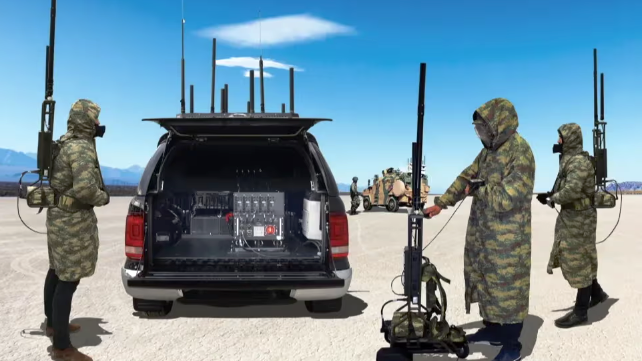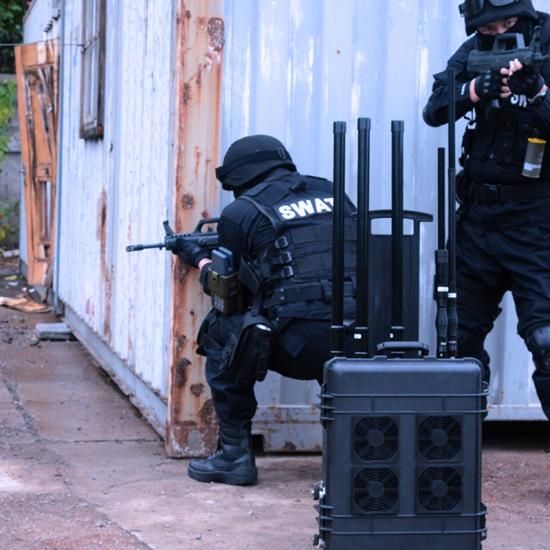🕵️♂️Get Up to 80% Off On All Products, StaySharp⚡
Understanding SS7 Signal Jamming: History, Mechanics, and Prevention
Explore the evolution and vulnerabilities of Signaling System No. 7 (SS7), a critical telecommunications protocol developed in 1975. The piece traces how SS7, initially designed for performance without considering security threats, became susceptible to exploitation, leading to severe privacy breaches and unauthorized access.
CYBERSECURITY
Phillemon Neluvhalani
8/26/20244 min read


The History of SS7 Signal Jamming
Signaling System No. 7 (SS7) has been the backbone of the global telecommunications infrastructure since its development in 1975. The system was created to facilitate a variety of telecommunication services, including establishing and dismantling telephone calls, billing mechanisms, short message service (SMS), and number translation. The adoption and subsequent evolution of SS7 marked a revolutionary advancement in the way telecommunication networks function.
Initially designed for performance and efficiency, SS7 protocols did not account for the sophisticated security threats that modern telecommunications face. The absence of built-in security measures left SS7 vulnerable to various forms of abuse and exploitation. Over the decades, this vulnerability surfaced in numerous instances, underscoring the need for increased security measures.
One of the first significant exposures of SS7 vulnerabilities occurred in the early 2000s when security researchers began to publicly demonstrate the ease with which SS7 could be exploited. These demonstrations highlighted how attackers could intercept text messages, eavesdrop on calls, and manipulate billing information undetected. This newfound awareness propagated rapidly, leading to a cascade of targeted efforts aimed at fortifying network defenses.
By 2014, the alarming capabilities of SS7 exploitation had thoroughly captured the attention of the global telecommunications community. High-profile incidents, such as the unauthorized surveillance activities disclosed by media outlets, further accentuated the critical need for robust security upgrades. These disclosures triggered a wave of security enhancements and the development of protocols aimed at mitigating the risks posed by SS7 vulnerabilities.
The evolution of SS7 and its vulnerabilities gave rise to the concept of SS7 signal jamming - a defensive strategy designed to counteract the exploitation of these signaling protocols. As awareness of SS7 vulnerabilities grew, so did the efforts to mitigate these threats through both technological advancements and regulatory actions. These efforts have reshaped how telecommunications networks address security, emphasizing the continuous need for vigilance and innovation in safeguarding the integrity of worldwide communications.
How SS7 Signal Jamming Works
SS7, or Signaling System No. 7, is a set of telephony signaling protocols established in 1975 that are used to set up and tear down telephone calls in public switched telephone networks (PSTN). Under typical conditions, SS7 protocols facilitate a variety of communications services, including call forwarding, short messaging service (SMS), and billing functions by allowing different networking elements to communicate with each other securely. This seamless and reliable exchange of signaling information is vital to the consistent operation of telecommunications networks.
SS7 signal jamming refers to the malicious disruption of these signaling protocols, which intends to render communication networks nonfunctional. Attackers often achieve this disruption by intercepting or halting signal transmissions, thereby sabotaging the coordination between network elements. Key methods used for such interference include tracking, eavesdropping, and fraud, all of which exploit vulnerabilities in SS7 protocols.
One notable attack method is tracking, where attackers utilize the SS7 network to determine the location of a mobile phone user. This is typically done by sending a request to the home location register (HLR) or visitor location register (VLR) to gain access to a user's International Mobile Subscriber Identity (IMSI) and subsequently their location. This not only breaches user privacy but also compromises the security of individuals by providing real-time location data.
Eavesdropping, another prevalent form of SS7 exploitation, involves intercepting voice and text communications. Attackers can ingress into the signaling network to capture call data or SMS content, thereby accessing sensitive information. They achieve this by mimicking legitimate network elements or leveraging unauthorized access to signaling points within the network.
Fraudulent activities via SS7 jamming are typically conducted by manipulating the signaling traffic to facilitate unauthorized transactions or redirect communications. This could include re-routing SMS-based two-factor authentication codes to an attacker’s device or initiating unauthorized call forwarding to incur significant financial charges to unsuspecting users. These actions not only impact end-users by violating their security and privacy but also cause severe disruptions and reputational damage to network providers.
The impact of SS7 signal jamming extends beyond individual user inconveniences. Network providers grapple with fraudulent activities that lead to financial losses, customer dissatisfaction, and potential regulatory action from compromised communication services. The technical intricacies of SS7 jamming require ongoing diligence and robust countermeasures to mitigate the enduring threats posed to telecommunication infrastructures.
Recent Events and Prevention of SS7 Signal Jamming
Recent notable incidents of SS7 signal jamming have underscored the vulnerabilities in global telecommunication infrastructures. In 2017, the mobile networks in Germany experienced a significant breach where hackers exploited SS7 protocols to intercept SMS messages and two-factor authentication codes, causing widespread concern over the integrity of sensitive communications. Similarly, in 2019, Brazilian officials reported targeted SS7-based attacks, resulting in compromised bank accounts and unauthorized financial transactions. These events have highlighted the critical need for robust security measures to protect against SS7 signal jamming and related threats.
To combat SS7 signal jamming, several strategies have been put in place by industry leaders. Detection is the first line of defense, where continuous monitoring systems are employed to identify suspicious activities. Advanced analytics and machine learning algorithms help in detecting anomalies that signify potential SS7 exploitation. Additionally, encryption of signaling messages significantly reduces the risk of unauthorized access and manipulation.
Authentication mechanisms are another critical component. Implementing stringent authentication protocols ensures that only verified and authorized devices can interact with the SS7 network. This is complemented by real-time monitoring solutions that provide telecom operators with immediate alerts and actionable insights regarding suspicious activities, allowing them to act swiftly to mitigate potential threats.
Best practices for telecom providers include the adoption of SS7 firewalls that filter and block malicious traffic, comprehensive vulnerability assessments, and regular security audits. These measures, combined with staff training and awareness programs, foster a robust security posture. Additionally, industry bodies have called for enhanced regulatory policies to standardize security requirements and ensure consistent implementation across the board.
Despite the advanced measures in place, the dynamic nature of cybersecurity means that SS7 signal jamming remains an ongoing challenge. Continuous innovation and vigilance are paramount, as the ever-evolving tactics of cybercriminals require persistent and adaptive strategies to ensure the resilience of telecommunication networks.








